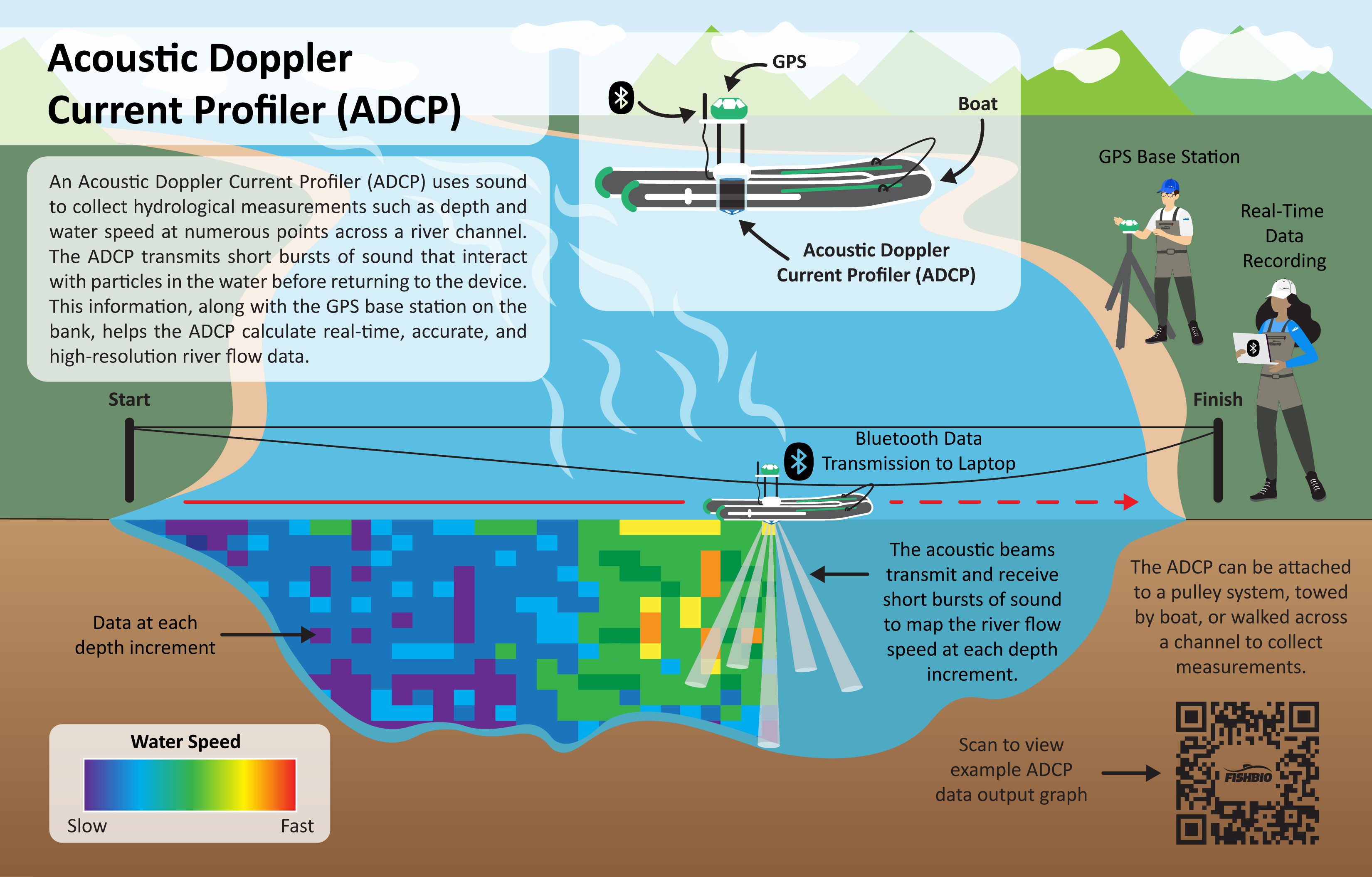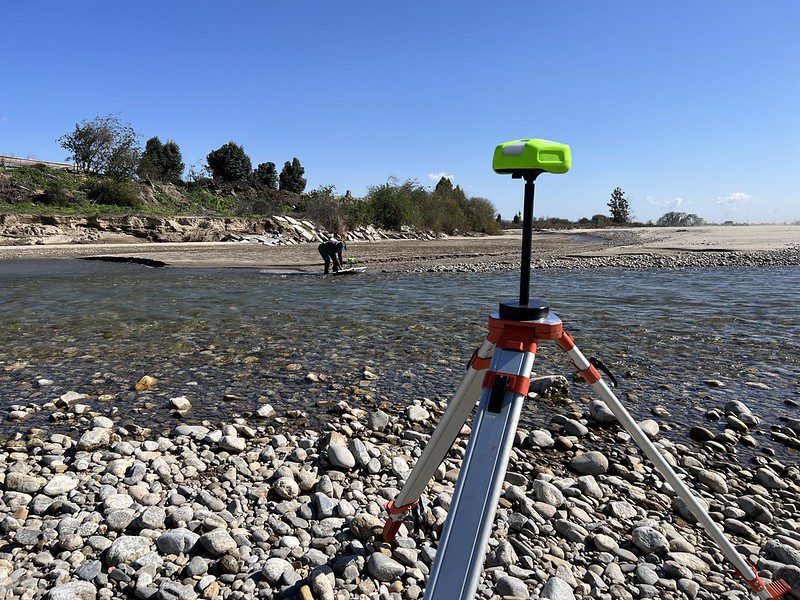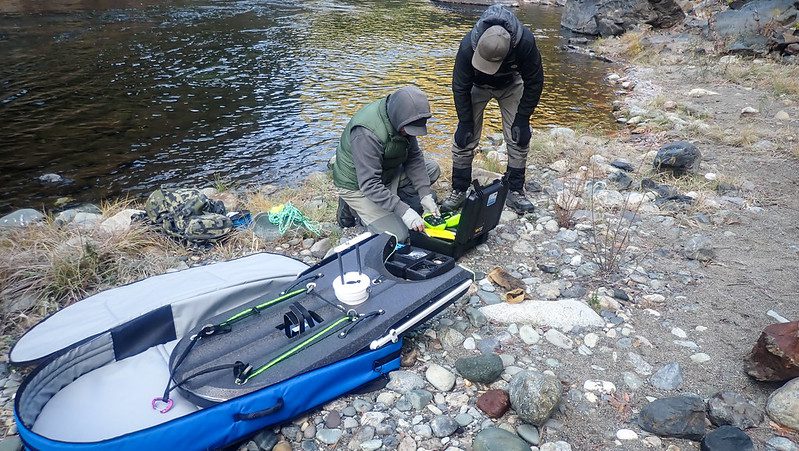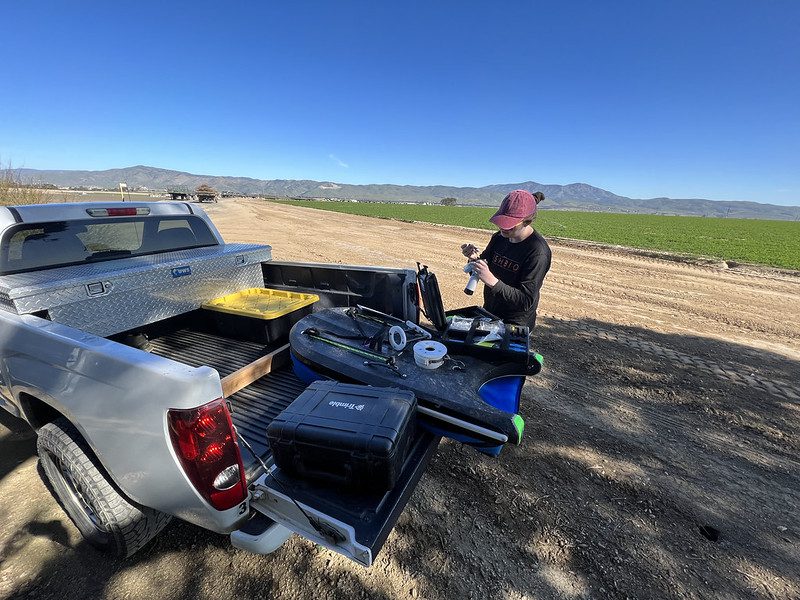
FISHBIO recently purchased a new SonTek RS5 acoustic doppler current profiler (ADCP) to allow for safer, more efficient, and more accurate hydrological measurements in the field. An ADCP sends out “pings” of sound waves in rapid pulses that bounce off the river bottom and off particles floating in moving water. By measuring the reflection of these pings, the ADCP is able to calculate a river’s flow, or discharge, as well as the profile of the river bottom. ADCPs replace the traditional method of sending a technician into the river or lowering meters over the side of a bridge to manually measure river flow rate and depth at numerous points across a channel. This valuable piece of technology allows scientists and hydrologists to efficiently collect highly detailed and accurate data over a long time span without the need to frequently collect manual measurements or maintain flow gauging equipment. Plus, the ADCP can function across wide ranges of water depths and flow velocities.
The Specs
The biggest advantage of the RS5 over other ADCP models is its compact size and self-contained design. There is no need to plug in any power sources because it has two internal rechargeable lithium ion batteries that last for seven hours of continuous use. SonTek’s HydroBoard II Micro is compact, comes with a backpack carrying case, and weighs just 3.63 kg (8.0 lbs). The RS5 fits snugly into the HydroBoard and measures only 24 x 5 cm (9.5 x 2.2 in). With nothing else needed except for a computer and tow ropes, the device is easy to operate with one or two people, without the need for a larger field crew required by traditional sampling methods.
The RS5 can detect flow across different depths with 2.5 cm (0.98 in) resolution and an accuracy within 1% of measured values. It works in water depths ranging from 0.1 to 6 m (3.9 in – 19.7 ft), water velocities ranging from 0 to 5 m/s (16 ft/s) and temperatures ranging from -5˚ to 45°C (23˚ – 113°F). Although the ADCP can handle a wide range of conditions, considerations must be made for site selection when taking measurements with an ADCP because turbulence, variation in temperature and salinity, or underwater obstacles may obstruct accurate readings.
How it Works
An ADCP determines the river’s flow rate by transmitting sound wave “pings” through the water, which interact with suspended particles and the river bottom, before reflecting back to the device. The ADCP evaluates the pattern in which the sound pings return, allowing it to calculate the speed of the water at many given points within the river. This information, along with the real-time location information collected by the onboard GPS and corrected by the GPS base station on the bank, help the ADCP accurately calculate the water flow rates with high-resolution. The ADCP also factors in and corrects for movement of the board on which it is mounted while measurements are collected. In addition to transducers that emit sound “pings” and hydrophones that listen for the returning pings, ADCPs typically come equipped with a clock, thermometer, compass, and pitch/roll sensor. An external computer, connected via bluetooth, is used to collect real-time data from the ADCP.
Where it Can be Used
ADCPs can be deployed in many ways, from attaching it to a moving boat to mounting it on the side of a canal. They are frequently used by hydrologists to better understand how a streambed changes over time due to erosion. However, in recent years scientists have found ways to apply the ADCP technology to collect critical information that goes beyond a river bed. In fact, ADCPs have been used in fisheries studies to monitor how fish respond to different flow scenarios below dams, and at fish guidance structures, and some researchers have even used ADCPs to count fish. Further, the ADCP’s ability to detect particles in the water has allowed biologists to measure zooplankton movement patterns, transport of plastic debris, and turbidity levels at different depths.
FISHBIO has already used the ADCP to help determine the best location to install a rotary screw trap on the North Fork Yuba River, and to evaluate passage flows for steelhead (Oncorhynchus mykiss) in the Salinas River watershed. The ADCP will be a valuable tool in much of the work FISHBIO does, including project planning, habitat assessments, watershed monitoring, and construction projects. Please contact FISHBIO if you think an ADCP might be needed for your next project.



